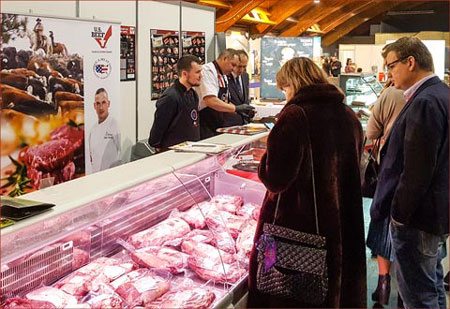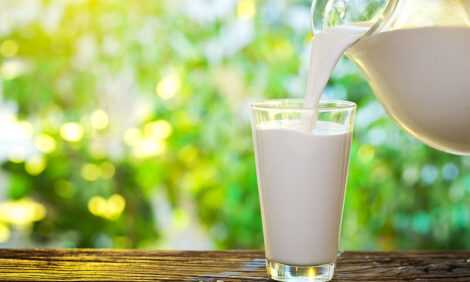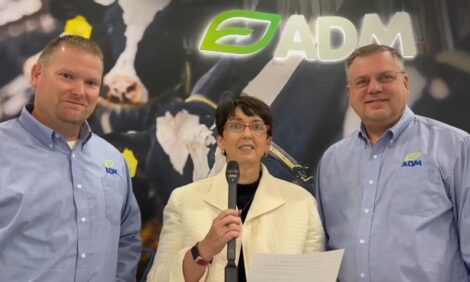



Delving into “less and better” meat
When talking about sustainable meat, we often hear the phrase “less and better” as the guiding principle – but what does that mean in reality?The beef, dairy and meat industries often find themselves in the crosshairs when we discuss sustainability. The media narrative often cites resource use, greenhouse gas emissions and biodiversity loss as evidence of the industry’s sustainability woes.
From a consumer standpoint, numerous commentaries highlight food waste and overconsumption of animal proteins as an untenable strain on the world’s finite resources. However, it may not be fair or accurate to treat the meat industry as a sustainability pariah.
Numerous NGOs and farm advocacy groups have started championing the mantra, “less and better” as a compromise between intensive animal production and veganism. The idea is that encouraging consumers to eat less meat while ensuring animals are raised in welfare- and climate-friendly ways will be a win-win for the industry and the public. However, the way “less and better” looks in practice may be more complicated than the slogan indicates.
In order to break down the realities of less and better, Farm Gate host ffinlo Costain speaks with Dr Sarah Place, Chief Sustainability Officer at Elanco and Oistein Thorsen of FAI Farms to break down how the agriculture community and consumers approach the issue.

Less and better within the beef and dairy industries
In Sarah Place’s experience at Elanco and in her previous role with the National Cattleman’s Beef Association in the United States, she’s found that less and better is highly subjective. Depending on where you’re raising animals or the supply chain farms operate in, it can mean wildly different things.
She tells Costain that our perceptions of the issue are highly emotive, but not always correct. Data on consumption and production practices don’t always match the neat narratives of virtuous veganism or the perils of intensive beef production.
In her position with Elanco and as an animal scientist at UC Davis, she explains that while wealthy nations consume more animal protein than poorer ones, there are shifts in consumption patterns. Over the last 30-40 years, US consumers have shifted away from red meat and are eating more poultry – a image that contradicts existing perceptions.
Where feedlots fit in
Place explains that the image of cattle being exclusively reared on intensive feedlots isn’t borne out by production data. In the US, ruminant agriculture is more of a forage and grazing-based system – they have the grassland resources to do it. Feedlots only account for the last four to six months of the cow’s life.
When Costain asks her if feedlots will exist in 30 years, Place says that they will. In her view, finishing operations are largely the same across the developed world; they don’t completely undo sustainability efforts made earlier in the cows’ life. Cattle producers are usually keen to reduce water consumption and are aware of sustainable innovations that can improve production – but this doesn’t necessarily fit into the existing frameworks we have when discussing sustainability.
If we give more context to cattle production, raising cows with regenerative methods and resources isn’t mutually exclusive to finishing them in feedlots. By the time finished beef and dairy products are available to consumers, there isn’t any easy way for them to differentiate between animals raised in intensive or regenerative systems. In Place’s mind, this is an example of people drawing firm boundaries within the food system that don’t correspond to farming realities.

If we shift our focus away from the four to six months that cattle spend on feedlots, Place points out that pigs and chickens spend much longer in intensive conditions. Keeping these animals in intensive systems for their whole lives can be environmentally draining and represents a huge sustainability challenge. The fact that Americans consume more chicken than beef intensifies this environmental burden.
Where this gets “less” than helpful
When discussing the issue with Costain, Oistein Thorsen from FAI Farms says if we focus too much on “less” when discussing sustainability, we risk personalising the issue. The idea that a simple change in your diet will solve every climate, biodiversity and welfare woe in our food system is naïve – the fact that it won’t work doesn’t help matters either.
Thorsen tells Costain that leaning into messages about changing personal behaviour and cultural patterns alienates people. By doing this, we risk blaming individuals for the status quo and stalling our chance to make the big structural changes we need to move forward.
Instead of shaming people for eating meat, we should focus on how the developed world can decarbonise its economies, or how agricultural subsidies can drive positive climate and welfare outcomes. These moves could be more impactful than stressing individual choices.
When looking at things from a farmer’s perspective, Place explains that when advocates emphasise “less” in the sustainability conversation, cattle producers feel attacked. “It’s a trigger word for them,” she says.
In her view, sustainability advocates have inadvertently demonised cattle producers and other farmers in the last decade. Sustainability can easily be reframed – there are a lot of natural alliances between environmentalists and agriculturalists. Regenerative farming can be a boon to carbon sequestration, biodiversity and soil health. Emphasising “less” isn’t the way to make sustainability salient for the agri-food sector. It can easily become a food shaming exercise.
The realities of the market
Both Place and Thorsen agree that if sustainability advocates focus on farming supply chains and offer pragmatic solutions, the dialogue and calls to action will achieve more.
Place explains that when we frame sustainable agriculture around the need to feed the growing global population with limited resources, we usually think that we need to increase production. However, distribution and consumption patterns play a much bigger role in feeding the world than sheer production numbers.

In the developed world, much of our food is wasted in fields or spoils before it reaches consumers. Retailers also create incentives for customers to stockpile and waste food (who among us can resist a 2-for-1 deal?). Researchers estimate that the developed world wastes half of the food it produces. Reducing food waste and the dead ends in the supply chain is critical if we want to build a sustainable food system.
Focusing on “better”
In their interviews with Costain, Thorsen and Place agree that meeting sustainability goals less about how much meat we consume and more about how the animals are raised. Both recommend emphasising “better” in the sustainability dialogue to highlight this.
But “better” gets complex very quickly. Does better mean more nutritious? Does it mean improved animal welfare? Does it mean embracing climate-friendly farming? Costain, Place and Thorsen all agree that “better” encompasses different priorities. However, they assert that our food system should be flexible enough to meet those benchmarks. They also state that any action we take on “better” farming will improve the food system.
In Thorsen’s view, a key component of “better” revolves around reversing intensive agriculture. As it stands now, there isn’t an easy way for the public to distinguish between different animal production systems when they’re shopping. This information gap makes it more difficult for consumers to use their purchasing power to further sustainability goals.
Shifting to the farmers’ perspective, Place explains that “better” encompasses more than just welfare and environmental concerns. Sustainability must be economical as well. Farmers need to maintain or improve their profit margins as they move away from intensification to make the changes permanent.
Her vision of “better” has farmers selling directly to consumers and exercising greater control over farm supply chains. She explains that a consumer’s willingness to pay for a premium product doesn’t always translate into greater returns for the producer – controlling farm supply chains from “farm-to-fork” could help combat this. It also has the potential to eliminate waste and focus on the reality of the animals and people in the food system. Place also tells Costain that sustainability needs to be about identifying win-wins for farmers and consumers.

You can’t manage what you can’t measure
When talking about better animal production, there’s a key question that we should be answering: “better” compared to what? Both Thorsen and Place agree that farmers and the public need to use the right measurements and metrics to gauge their progress. Though it errs on the side of management jargon, identifying and monitoring key performance indicators (KPIs) for our food system will make a huge difference in sustainability efforts.
Adopting climate metrics like GWP*, animal health indicators like disease rates and welfare measures like stocking density will make the conversation outcome-based and improve management strategies.
Thorsen explains that this type of communication will provide evidence that farmers are building positive outcomes – it will shift the sustainability debate and get more consumer buy-in. Similar to Place’s emphasis on identifying win-wins, using accurate and informative metrics will let farmers and consumers feel good about their decisions and livelihoods.
Listen to the full Farm Gate podcast here.


